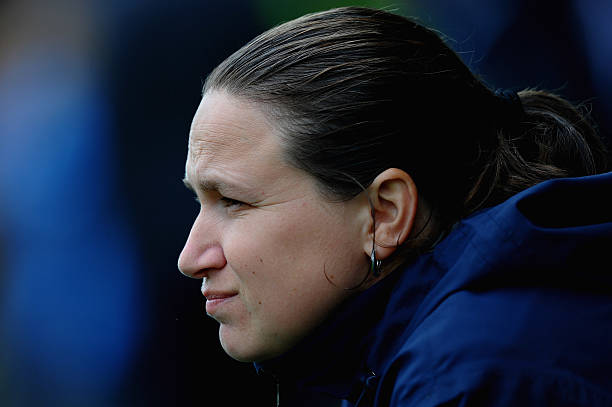When the FA WSL was formed in 2011, Arsenal Ladies were a dominant force in women’s football and now they’re a shadow of their former selves – what happened?
The Arsenal Women have had a rich history since their inception 30 years ago.
Back in 2011, when the FA WSL was created, the Arsenal were the dominant team, winning regular titles and cups. That domination was one of the reasons behind the FA implementing changes in order to make the league more competitive.
It must be said, thanks to Vic Akers and the Arsenal board, the Ladies team, as it was called at the time, received strong financial backing, which allowed quality players to be signed. For example, at one time, the England, Scotland, Wales and Ireland captains were all playing for the club at the top of their game.
Seasons 2014-2017: The Pedro Losa years
Pedro Losa came to Arsenal with the aim of rebuilding the side after the Kerr years and to stamp his ideas on the side. He came at the tail end of the 2014 season and did not really have time to implement big changes.
Unfortunately, he started his reign with a defeat in the Conti Cup final.
That defeat was key because it opened the door to Manchester City’s winning mentality. It is well known that the first trophy is the hardest one to win. City were not as strong as they are now and it was a crucial win for them.
In terms of league results, Losa had no time to stamp his identity on the team with the squad already settled.
The FIFA Women’s World Cup 2015 cost the Gunners a place in the Champions League. The league restarted a week after the Lionesses had won bronze and some of the England players came back injured, like Jordan Nobbs, or tired and their form dropped.
Despite this, Pedro Losa managed to win the Conti Cup with a 3-0 victory over Notts County.
It has to be said, in men’s football, the league would never be allowed to start a week after the World Cup final; players always get a month off to rest and recharge the batteries.
The squad was also a bit short at the time with many youngsters thrown at the deep end without much preparation for big games in the second half of that season.

In 2016, the League title challenge was finished after matchday three as Arsenal lost their second game in a row. Manchester City and Chelsea finished in the top two places.
The manager resorted to chopping and changing formations and the starting line up.
There was another cup win with the FA Cup, won at Wembley Stadium against Chelsea thanks to a Danielle Carter screamer.
In 2017, a quality Spring series produced a lot of hope, as the team went unbeaten. With a stabilised squad and starting XI, the club looked to be on the right path back and went back to winning ways.
The defensive stability was built upon the pairing of two 18-year-olds at centre-back, Patten and Wubben-Moy, but unfortunately both left to study in the USA during the summer transfer window.
The season 2017/18 was a short one unfortunately for the manager.
An awful start to the competition sealed his fate and he left the club after three league games.
Honours in that period:
- FA Women’s Cup 2015-16
- FA WSL Continental Cup 2015
League Record:
- 2014: Losa’s record P3 W2 D1 L0, 7 pts, finished fourth
- 2015: P14 W8 D3 L3, 27 points, finished third
- 2016: P16 W10 D2 L4, 32 points, finished third
- 2017: Spring Series, P8 W5 D3 L0 (unbeaten), 18 points, finished third
- 2017-18: P3 W1 D1 L1, 4 points before Losa was sacked
Arsenal Women’s FA WSL years can be resumed as follows: superb for two seasons, disappointing for the next two and inconsistent for the following three.
Hopefully, Joe Montemurro will be able to bring back the glory to the club that was once the leading women’s side in England and is now just a shadow of its former self.

